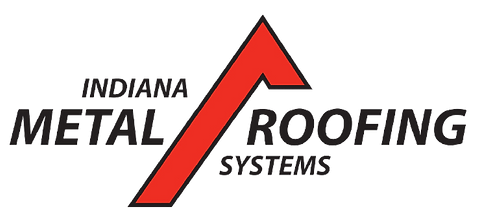Storms can wreak havoc on homes, and your roof is often the first line of defense against these natural elements. Indiana Metal Roofing Systems knows that understanding the types of storm damage and how to address them is key to maintaining a safe and durable roof.

1. Hailstorm Damage
Hailstorms are among the most common causes of roof damage. Even small hail can cause significant problems if left untreated. Hail impacts vary based on size and density, but damage can occur to various roofing materials, from asphalt shingles to metal roofs.
How Hail Damages Your Roof
Shingle Damage: Hail can knock the protective granules off asphalt shingles, causing them to degrade faster.
Dents in Metal Roofs: Although durable, metal roofs can dent when struck by larger, denser hail.
Exposed Roofing Materials: Hail can crack or break shingles, leaving the underlayment exposed to moisture, leading to leaks.
If you suspect hail damage after a storm, it’s essential to have a professional inspection to assess the situation.
Unique Fact: According to the National Severe Storms Laboratory, hailstorms cause an estimated $1 billion in damage to crops and property each year in the United States.
2. Wind Damage
High winds can cause extensive damage to your roof, especially during severe storms. Even though modern roofs are designed to withstand wind, extreme wind speeds can lift shingles or cause them to crack, leading to water infiltration.
Common Wind-Related Roof Damage
Missing Shingles: Wind can blow shingles off your roof, leaving bare patches that expose the underlayment to water.
Lifted Flashing: High winds can loosen the flashing around chimneys or vents, creating vulnerabilities for leaks.
Punctures from Debris: Debris carried by strong winds can puncture your roof, especially near the ridgeline or edges.
3. Rain Damage
While roofs are designed to repel rain, persistent and heavy downpours can still cause issues, especially if the roof is already compromised. Pooling water and overwhelmed gutters can lead to moisture penetration and mold growth, putting your home at risk.
How Rain Damages Your Roof
Pooling Water: Poor drainage or low spots on the roof can lead to water accumulation, which can cause leaks or structural damage.
Worn Shingles: Over time, water exposure wears down the granules on asphalt shingles, reducing their effectiveness.
Gutter Overflow: Heavy rain can clog or overwhelm gutters, causing water to back up and damage the roof’s edges and foundation.
4. Snow and Ice Damage
Winter storms bring their own set of challenges. Snow and ice can add excessive weight to your roof and cause freezing and thawing cycles that create cracks in shingles. Icicles, while picturesque, signal potential problems with ice dams, which can severely damage your roof.
How Snow and Ice Damage Your Roof
Weight of Snow: Heavy snow accumulation can stress the roof's structure, especially on older homes.
Icicle Formation: Icicles indicate poor insulation or ventilation and can lead to ice dams that cause leaks.
Freezing and Thawing: Water that seeps into small cracks can freeze, expanding the cracks and causing greater damage.
What to Do After Storm Damage
After a storm, it’s critical to assess your roof for any signs of damage and take immediate action to prevent further issues. Here are some steps to follow:
Call a Professional: Don’t attempt to climb onto your roof after a storm. Contact a roofing contractor to inspect your roof safely.
Document the Damage: Take photos of the visible damage and keep a detailed record of repairs.
File an Insurance Claim: Work with your roofing contractor and insurance company to file a claim and receive compensation for repairs.
Indiana Metal Roofing Systems: Your Local Roofing Experts
At Indiana Metal Roofing Systems, we specialize in storm damage repairs, ensuring your roof is secure after severe weather. Our commitment to quality, A+ BBB rating, and 5-star Google reviews make us the trusted choice in Fort Wayne. We use top-quality materials and provide expert craftsmanship, giving you peace of mind when it comes to protecting your home.
FAQs
1. How do I know if my roof has storm damage?
Common signs include missing shingles, dents, or punctures from debris, leaks, and clogged gutters filled with granules.
2. What should I do if I have roof damage after a storm?
Contact a professional roofing contractor for an inspection. Avoid climbing onto the roof yourself, as it may be unsafe.
3. Does homeowner's insurance cover storm damage?
In most cases, yes. Homeowners’ insurance typically covers wind, hail, and storm damage, but not flood damage unless specified in your policy.
4. Can hail damage lead to leaks?
Yes, hail can knock off the protective granules on shingles or even puncture them, allowing water to seep into your home.
5. How do I prevent storm damage to my roof?
Regular maintenance, such as cleaning gutters and inspecting for loose shingles, can help prevent severe damage during storms.
Conclusion
Storm damage can occur in many forms, from hail and wind to rain and snow. By understanding the types of storm damage and addressing them quickly, you can protect your home and ensure your roof’s longevity. Contact Indiana Metal Roofing Systems for expert assessments and repairs to keep your roof secure in all weather conditions.
For more information on roof inspections, click here.

Comments